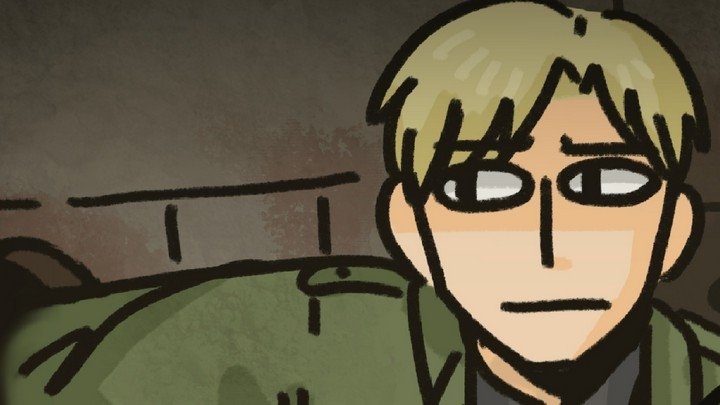The Game Gear Directory: (Bi-Bu)
Small screen, six AAs, infinite joy

Bishoujo Senshi Sailor Moon S (1995)
It was an interesting choice to go with a full-size Sailor Moon for this somewhat generic platform game when a more "chibi" style would have been better-suited, but the stages have been designed around the enormous sprite so it doesn't cause any problems. There's a fair amount of sample speech here and some impressively colourful stills, but the adventure isn't a particularly thrilling one. Usagi strolls around everywhere casual as you like, which rather fails to imbue the proceedings with any urgency. It is fun though, and it looks great. There's a roulette mini-game between stages that's pretty easy to win, but I couldn't figure out what I was actually, erm, winning. Not bad, but too straightforward in its stage layouts. ***

Bram Stoker's Dracula (1993)
Based on the absolutely brilliant film (it is, don't argue), this is a rather good little platformer that sees you take control of Keanu Reeves and journey through a spooktacular world of bats, skellingtons and ghosties. Yes, there's a touch of artistic license going on here, but that's fine when things turn out as well as this. There are some problems, mind; it isn't tailored brilliantly for the handheld, leading to some rather unwelcome situations where ranged-attack enemies aren't visible when they really should be. It's also one of those games where you need to play on Hard mode to see the ending, which is a pisser because while the game overall isn't that tough until its final level, said final level is an absolute pig-dog with a ridiculously unfair time limit that essentially guarantees, even with perfect play, that you'll beat the final boss with mere seconds remaining. It's a totally crummy way to extend the gameplay of an otherwise fairly short game, but one that's packed with hidden items and alternate routes enough to be a lot of fun even if you don't manage to beat it. Better on Master System, but still good. ****

Bubble Bobble (1994)
Initially, this seems like a reasonably solid conversion of the classic Taito coin-op. It's Bubble Bobble, you know? The stages have been reworked to fit nicely on the Game Gear screen, and the handling is pretty good, with all the moves you'd expect present and correct. Unfortunately, however, there are a couple of reasonably major problems. First is that the game cannot seem to handle more than, say, six sprites at once, and that includes bubbles. Which you are more or less constantly firing. It gets to a point where you're getting killed by enemies that are literally invisible due to the sprite flicker, and that's... a pretty big problem. Second, and possibly worse, in this port you'll quickly notice that the classic Bubble Bobble background tune - while a pretty solid rendition - restarts every time you move to the next stage. Yes, every single time. It's as maddening and as baffling as it sounds, and for that reason I cannot in good conscience recommend this version unless you have absolutely no other ports available. **

Bugs Bunny in Double Trouble (1996)
This baffling licensed joint from Probe (again) is a masterclass in over-egging the pudding. With a multitude of stages based on classic Bugs Bunny shorts, the stage is very much set for a classic, colourful platformer. Unfortunately, this is from the time when "gameplay variety" ruled the roost, so each of the stages has different and somewhat complex rules that you need to read before diving in. And even when you know what you're doing, the stage layouts remain confusing, the controls remain ridiculously rubbery, and your character moves way too fast to precisely position him to climb up or ladders and the like. It looks excellent, mind, with gorgeous pixel art that frankly defies its 8-bit limitations, and some tremendous animation to boot. But it's not enough to make up for the utterly confused gameplay. *

Bust-a-Move (1996)
Known, of course, as Puzzle Bobble in Japan, this is a perfectly serviceable version of Taito's brilliant puzzler. Match the bubbles to make them fall off the screen, you know how it is. Puzzle mode is here, along with an endless game (confusingly titled "Challenge Record") and the customary Vs mode, letting you play against both the CPU and another player, with the use of two carts and a Gear-to-Gear cable. The visuals are exactly as they need to be, with some rather attractive pastel-y graphics to open the game. Interestingly, there's a clean sample of the "Ready... go!" voice at the start of each stage, but otherwise the music is more traditional. There's not much to say about this one, but I mean that in a good way. It's a lot better than I expected, wringing smooth and enjoyable gameplay out of the ageing hardware. Recommended! ****

Buster Fight (1994)
This is a Japan-only port of the unusual Sega Master System one-on-one fighter, Masters of Combat. And it's actually surprisingly fun, giving how primitive the hardware is when it comes to portraying large, animated characters. Buster Fight does something of a sterling job of presenting a coherent one-on-one fighter. Yes, it's very messy, but it's also quite fun with some surprising flourishes to the character animation and a decent sense of feedback to each hit. The CPU is about as frustrating as one of the arcade Mortal Kombats at times, but the difficulty can be tweaked as well as the speed; at full crank this game can be actively exhilarating. There's also the customary link game, for just about the perfect little Game Gear fighting package. I don't know what the hell I'm doing, but I like it. ****
Next time: (Ca)




